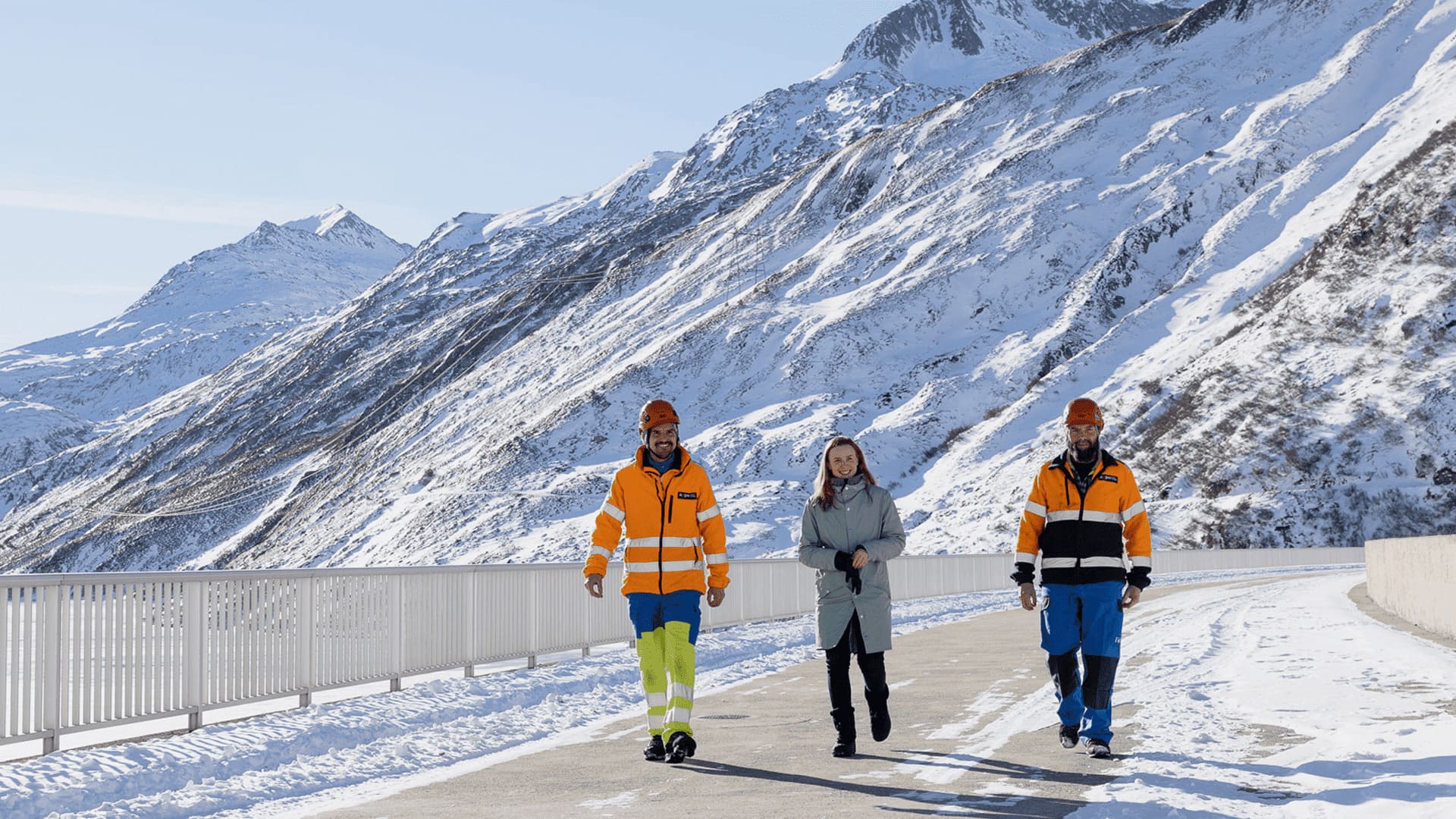04.05.2023 | Why higher dam walls don’t result in more hydropower – but are still a sensible option
Raising dam walls to advance the energy transition
If Switzerland wants to secure its energy supply in the future by making greater use of solar power, it will need additional stores – especially for the winter months. For that reason, raising dam walls and dam levels is currently a hot topic of debate. Axpo hydropower expert Peter Lustenberger explains what the projects offer (and what they don’t).
Peter, Switzerland is currently discussing various projects for raising dam levels or dam walls. What is the aim of this?
To produce more electricity at the times when we need it most urgently. Although Switzerland produces enough electricity across the year as a whole – in most years, at least – the situation is different when looking at the individual seasons. Whereas we generate a surplus in summer thanks to copious amounts of hydropower, there is a shortage of domestically produced electricity in winter. This is because hydropower generates less electricity in those months and we use a lot more power in winter. Larger reservoirs would allow us to store more water for winter – water that, as things currently stand, we would have to use for electricity production in summer because the reservoirs are full. In other words, larger reservoirs would allow us to shift production from summer to winter. This is urgently needed, as we face a widening winter energy gap. One day, there will be no more nuclear power – and work is underway on expanding solar power (which produces much less electricity in winter than in summer).
So would higher dam walls and levels result in larger winter reserves but, ultimately, no additional production?
Indeed, higher dam levels and walls alone result in almost no additional production. They simply allow water to be converted into electricity in winter instead of summer – in other words, they redistribute production seasonally. After all, it doesn’t suddenly rain more just because the wall is higher. Overall production only increases if you can exploit additional water resources that weren’t previously used for electricity production. Specifically, the 15 proposals of the ‘Hydropower Round Table’ envisage projects that deliver 2 terawatt hours (TWh) of additional winter power, although 1.4 TWh of that is shifted from summer. Only 0.6 TWh would be new production – that is, new power plants, new water catchments or the prevention of overflows.
Do higher walls and dam levels help to advance the energy transition?
They are actually essential in that regard. Switzerland wants to complete the energy transition primarily through a massive expansion of solar energy, the vast majority of which is generated in summer. Of course, there will also be an expansion of solar power in the Alpine region, leading to additional winter power. But most solar energy is produced in the lowlands – and there’s not much of it in winter. Accordingly, we urgently need a way to shift production to the colder months of the year. If the aim is to achieve the energy transition through an expansion of solar power, it will also be necessary to support these hydropower projects.
In Switzerland, efforts to boost winter power centre around the 15 projects of the ‘Hydropower Round Table’. Why these projects in particular?
These 15 projects represent a sort of compromise between cantons, operators, and organisations involved in nature conservation and environmental protection. The participants in the round table examined how 2 terawatt hours of additional winter power – a target set by the Federal Council – can be generated with the least possible impact on nature and the environment, and it was this process that gave rise to the 15 projects. Obviously, the 2 terawatt hours delivered by the 15 projects are not enough to complete the energy transition. We need much more – but it would be an important step in the right direction.
The 15 projects also include two from Axpo and one from CKW – what about them?
On the one hand, we’re looking at raising the dam level at the Mattmark and Göschenen power plants and, on the other, at raising one or two dam walls at the Vorderrhein power plants. Feasibility studies are currently being prepared for all of the projects. The undertakings are only of interest from a security-of-supply perspective. From a purely economic point of view, we wouldn’t be tackling them in the current environment. These are investments that run into the millions and, instead of boosting production, simply move production to the winter.
Optimistically, when will these additional winter reserves be ready?
If everything goes well, at some point in the early 2030s. But it all depends on the government providing sufficient funding for the projects, on us working with awarding authorities to find a solution for residual value compensation when concessions end, and on the absence of objections that draw out the process or surprises of a technical nature. So there are still a few potential stumbling blocks.




.jpg)





